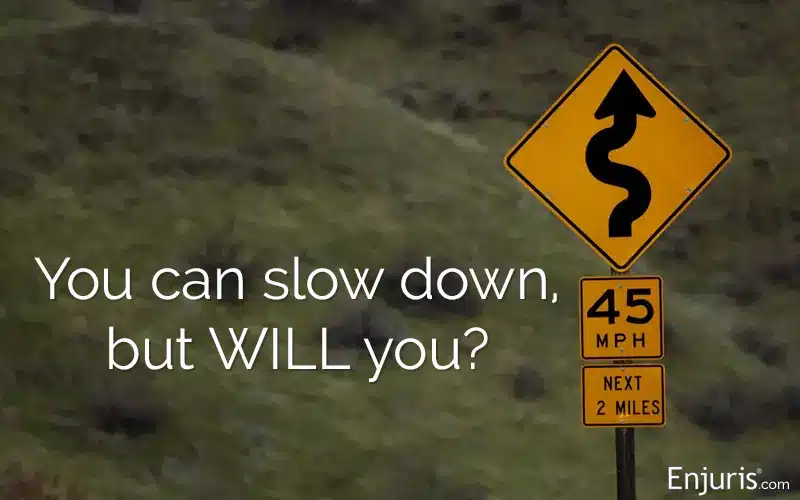Car accidents are one of the leading causes of death and injury worldwide, and one of the major factors that contribute to the severity of these accidents is speed.
Researchers have consistently found a clear correlation between speed and the likelihood of suffering an injury or fatality in a car accident.
Let’s take a closer look at the relationship between speed and injuries in car accidents, including some of the key findings from the most recent research in this area.
What is the correlation between speed and car accident injuries?
It probably won’t surprise you to learn that the faster a vehicle is traveling, the more severe the injuries are likely to be in the event of a crash. But just how strong is this correlation?
A study by the World Health Organization found that a 5 percent increase in average speed leads to a 10 percent increase in injury accidents and a 20 percent increase in fatal crashes.
Similarly, researchers from the Insurance Institute for Highway Safety found that a 5 mph increase in the maximum speed limit was associated with an 8 percent increase in the fatality rate on interstates and freeways, and a 3 percent increase in fatalities on other roads.
Speed is particularly dangerous when it comes to the most vulnerable people on the roads—pedestrians.
While most pedestrians survive if hit by a car traveling 20 mph, the majority of pedestrians are killed if hit by a car traveling 30 mph.

Source: Global Road Safety Partnership
Overall, there is a strong correlation between speed and injuries in car accidents, and it’s important for drivers to obey speed limits and drive at a safe and appropriate speed for the conditions in order to reduce the risk of injuries and fatalities.
Why does speeding increase the risk of serious injury and death?
Speeding increases the risk of serious injuries and fatalities in car accidents for several reasons.
First, when a vehicle is traveling at high speeds, it requires more time and distance to come to a complete stop. This means that if the driver encounters an obstacle or has to brake suddenly, they may not be able to stop in time, leading to a collision. The faster the speed, the longer the stopping distance, and the less time the driver has to react to any potential hazards.
In the following graphic, the stopping distances include the distance traveled while the driver notices a hazard and applies the brakes (thinking distance), and while the vehicle comes to a full stop from its initial speed (braking distance).
Second, when a car goes faster, the energy it has because of its motion, called “kinetic energy,” increases exponentially. If there's an accident, this energy has to go somewhere, and it often goes into damaging the car and hurting the people inside. The faster the car is going, the more energy there is to cause harm, making injuries more severe.
Finally, speeding also reduces the effectiveness of safety devices such as airbags and seat belts. In a crash at high speeds, the force of impact may exceed the designed capacity of these safety devices, rendering them less effective in protecting the occupants of the vehicle.
What can I do to prevent myself from speeding?
Whether we like it or not, most of us are constantly in a hurry. There’s simply too much to do and not enough time to get it all done. Of course, no item on your to-do list is worth suffering a catastrophic injury.
Here are some steps you can take to prevent yourself from speeding while driving:
- Obey traffic laws: Make sure you’re familiar with the speed limit in the area you’re driving in and obey it. Traffic laws are put in place to ensure safety for all road users.
- Use cruise control: Many cars have cruise control features that allow you to set a maximum speed for your car. This can be helpful in preventing you from inadvertently speeding.
- Stay focused: Avoid distractions while driving, such as texting, talking on the phone, or eating, as these can cause you to lose focus and inadvertently speed.
- Give yourself enough time: Plan your route and leave early, so you don't feel rushed and tempted to speed to arrive at your destination on time.
- Check your speed regularly: Keep an eye on your speedometer to make sure you are not exceeding the speed limit.
- Avoid peer pressure: Don't let peer pressure or other drivers influence your driving behavior. Stick to your own safe driving habits.
- Use reminders: Use visual or audio reminders, such as putting a sticky note on your dashboard or setting the alarm on your phone, to remind you to drive at a safe speed.
Remember, speeding is not only dangerous, but it can also result in fines, points on your driving record, increased insurance rates, and even jail time. Keep yourself and others on the road safe and out of trouble by not speeding.
Should Your Car Limit How Fast You Can Drive?
We have the technology to prevent a driver from speeding—but should we use it? Speed causes injuries and fatalities, so maybe this tech can help.



